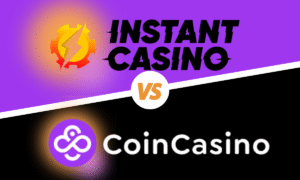Money is used in almost every industry and by nearly every individual. People use money to buy products and services for everyday use, whereas international corporations use it for business transactions. Even though money has such a powerful influence on the lives of everyone on the planet, it has always been under the control of central institutions such as banks and governments. However, the recent introduction of cryptocurrencies driven by unique tokenomics has completely altered the world’s perception of financial systems.
Tokenomics emerged as a viable option for implementing monetary policy on blockchain networks. The term is unmistakably new, and it has recently made significant progress in challenging traditional economic norms based on cryptocurrency. The following section contains a detailed tokenomics guide to help you understand what it is, how it works, and the various use cases it can cover.
The world we live in is based on incentives. A child, for example, attends school because doing so will provide them with the opportunity to obtain an education that will benefit them in the future. People adhere to their dentist’s recommendations for maintaining dental hygiene to reduce the risk of developing dental problems. Even the rules we follow while crossing the street may be more concerned with avoiding fines than with protecting our lives.
The tokenomics model was created to integrate the concept of incentives into cryptocurrencies. Cryptocurrencies are made up of strings of numbers and a set of mathematical rules for transferring value and computer code that triggers them. The underlying economic incentive structures, on the other hand, have the potential to create an entirely new and expanding asset class. Despite the fact that crypto assets have enthralled the entire world with their promise of economic opportunity, they lack tangibility. A US dollar can be touched and seen, but this is not the case with cryptocurrencies such as Bitcoin.
The US government provides backing for the US dollar, allowing people to trust in its value. The US Dollar is capable of maintaining relative stability compared to currencies of other countries such as Turkey or Venezuela because the world trusts the US, its economy and its long-term viability. What would happen if the US government refused to recognize the dollar?
Since the US dollar is just a piece of paper, it is likely to lose value in such a situation. On the other hand, the dollar can serve as a currency because of its functions in facilitating trade in goods and services. The same can be said for cryptocurrencies, which derive their value from trust in blockchain networks rather than governments. Furthermore, cryptocurrencies demonstrate their worth in terms of utility, ensuring that they are on par with fiat currencies worldwide. Understanding how the value of a cryptocurrency works is key in comprehending the concept of tokenomics.
Investing in the crypto space is a difficult decision, especially when people are skeptical of its value. As a result, it is critical to conduct a thorough analysis of a cryptocurrency amd ensure effective risk management before an investment. You may need to examine all of a cryptocurrency’s essential features in detail. Investors in the crypto space, on the other hand, are not limited to cryptocurrency tokens as an investment option. People can now invest in cryptocurrency tokens, which are also valuable. Simply put, tokenomics refers to the study of factors and context before investing in a token. It deals with the science of token economy and is based on the collaboration of the words “token” and “economics.” It can describe all aspects of a token’s life cycle, including its creation, management, and removal. The token economy draws attention to the system that governs incentive behavior.
To better understand tokenomics and how it works, it’s necessary to delve deeper into tokens. Tokens are essentially units that serve specific goals while also retaining value based on various characteristics. Tokens are recognized as valuable assets that can be used for purposes other than currency. Football tickets, for example, could be used as tokens because people can use them to watch a football match or trade them for something else.
Tokens could be used for a variety of purposes in a network beyond trading assets. With the introduction of Ethereum, the applications of tokens have grown. Instead of just enabling transactions, the Ethereum network proved to be the first blockchain platform to offer participants a wide range of decentralized services. The ability of the Ethereum network to provide these decentralized services demonstrates the importance of tokens. The tokens the Ethereum network are known as ERC-20 tokens.
There are two main types of cryptocurrency out there; bitcoin and altcoins.
Firstly, Satoshi Nakamoto, an anonymous developer, published a whitepaper in 2008 describing Bitcoin, the first electronic currency that was not controlled by governments or banks (BTC). It promises lower transaction fees and is entirely decentralized, unlike traditional online payments. There are no physical bitcoins; instead, the balances on a blockchain, a decentralized public ledger system, are kept. These Bitcoin token balances are then maintained using public and private keys to decrypt the encryption. In other words, a person’s public key is like a bank account number for sending and receiving bitcoin.
On the other hand, the private key is a secret key that allows people to authorize a bitcoin transaction. As a cryptocurrency, Bitcoin is accepted as a form of payment for goods and services in the same way that fiat currency is. The most intriguing aspect of bitcoin, despite its decentralized nature, is its competitive exchange rate against the dollar, which attracts potential investors and traders. Even though it is not legal tender, Bitcoin remains a popular cryptocurrency that has inspired many creators to launch their own cryptocurrencies, known as altcoins.
At first, Bitcoin was the only cryptocurrency available, but other projects began to emerge as time went on. As a result, altcoins were born. Ethereum, Litecoin, Ripple, Bitcoin Cash, and Monero are all digital currencies you may have heard of. All of these and more arose from their own native platforms, native blockchains, and all of them differed slightly from the Bitcoin blockchain. These newly-built coins, such as Monero, mainly were developed for a single-purpose use case – to serve as a digital currency that could be better than Bitcoin.
Simply put, these coins were created to compete with Bitcoin by altering the rules to appeal to various users. Although some of them have challenged Bitcoin over the years, Bitcoin still dominates the market. All other types of crypto coins are now referred to as altcoins or alternative coins.
The two main coins can be divided further; exchange tokens, DeFi tokens, ERC-20 tokens, governance tokens, security tokens, ICO tokens, web3 tokens, and utility tokens.
Offering a variety of currencies and trading options is one way for a crypto trading platform, or exchange, to set itself apart from its competitors. These include OTC, margin, and futures trading, as well as native exchange tokens. Users can use these tokens to pay fees, buy and sell other cryptocurrencies, and power certain operations like community voting for new coin listings. The BNB native token for the Binance exchange is arguably the most well-known and liquid of all exchange tokens.
DeFi may have been the latest trend in 2020, but the DeFi exchange still rose to $50 billion amid Bitcoin’s bull run. Does this imply that it has the potential to disrupt the crypto market? If that’s the case, how so? Believe it or not, the crypto niche is still centralized. Take Binance, for example; it is still controlled by people who oppose Satoshi’s vision. DeFi stands out because it was designed to help people avoid traditional crypto platforms. Thanks to DeFi projects, users can borrow and lend within a peer-to-peer network, leverage the loans, and “farm” tokens simply by being active.
ERC20 tokens differ from all other token types in that they are built on top of the Ethereum blockchain. The truth is that ERC20 is more of a token standard than a token. Let’s assume a company decides to create a decentralized application (dApp) on the Ethereum platform. To do their token work, they must follow the ERC20 standard, which lays out a set of guidelines.
The on-chain governance feature of the decentralized protocols allows governance token holders to influence a decision through in-built voting systems. As the number of dApps grows, governance tokens are becoming more critical. They help create a synergy where stakeholders and developers can shape the future of a protocol through open discussion and debate. COMP token holders, for example, can vote on essential Compound changes. That means that if a person owns COMP, they vote on whether to support or oppose the proposed changes or a future proposal.
As soon as regulators worldwide come to their senses and decide how to define a cryptocurrency, this type of token could be the next big thing in crypto. Security tokens are responsible for the “tokenization” phenomenon, which converts physical assets, such as real estate, into digital tokens. Security tokens have been around a while, but putting them to use requires a lot of proper regulation and standardization. As a result, we haven’t heard much about them.
The practice of the ICO (Initial Coin Offering) first appeared three years ago and quickly gained popularity. Crypto projects developers needed to raise funds, and to do so, they frequently created a new coin. Simply put, an initial coin offering (ICO) is a way for startups to raise money. Interested investors can purchase the offering in exchange for a new crypto token issued by the company. Crypto developers can raise enough funds to continue the development process through an ICO fundraising campaign. Typically, these tokens would be exchanged for BTC or ETH mainly because they are easier to exchange for other currencies and have higher market liquidity.
Utility tokens are a type of asset linked to a blockchain and allow users to buy goods or services in a particular cryptocurrency ecosystem. Unlike security tokens, utility tokens are not a direct investment; instead, they support the platform’s economy by providing services. Utility tokens are a type of asset that are linked to a blockchain and allow users to buy both goods or services that will be offered by the token developers in the future. Unlike security tokens, utility tokens are not a direct investment; instead, they support the platform’s economy by providing a steady flow of cryptocurrency in exchange for services. Binance Coin (BNB), for example, is a utility token that boasts about its payment method for fees associated with trading on its exchange. Token holders can get discounts when they use this utility token to pay for trading fees, travel expenses, gift cards, and other things. The utility coin’s ultimate goal is to help the platform’s development and ecosystem.
The team at Nemesis Wealth Projects is on a mission to create software and applications that make DeFi more accessible. With the upcoming user-friendly APP Wallet+Buy, users can purchase and safely store assets on their mobile phones quickly. Thanks to an update on the Swap+Shop function, users can also shop anywhere in the world using their tokens. In short, the company intends to provide a diverse range of assets that crypto investors can use in their daily lives. Upon their release, all the tokens were protected in four sections of the Nemesis Ecosystem: financial services, art and charity, meme and gaming, and business services.
For more information about Nemesis Wealth Projects, click here.







1 thought on “Nemesis Wealth Projects launches token platform ecosystem”
Comments are closed.